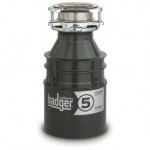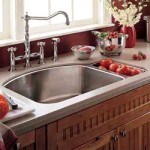Ever since man discovered fire we’ve used it to heat water. First we used it for cooking and later we used it for cleaning, and it usually took time to get the water heated to the point where we could use it. Today we take it for granted that we can turn on the faucet and within seconds we have our hot water on demand. That hot water may be heated and stored in a tank, or it may be heated by a new kind of technology called a “tankless” hot water heater. Either way, you have to love having the ability to take that hot bath at night or the hot shower in the morning without having to heat buckets of water over a fire!
Standard Hot Water Heaters
Hot water heaters are typically either electric or fueled by gas or oil. The water flows into the top of the tank where it is stored and heated. The tank is usually insulated to to keep the water hot, reducing the energy needed to heat it. All tanks will have a pressure relief valve that will open if the pressure builds up too high in the tank. This safety device prevents the tank from exploding from overpressure.
Tanks are usually constructed of steel with a glass lining inside. This glass lining helps to prevent corrosion of the metal. Another corrosion prevention device you will always find on a hot water heater is a magnesium anode rod. This rod will corrode instead of the steel. It’s a good idea to check the anode rod once a year and replace it when it becomes bad. This can greatly extend the life of your hot water heater. However, if a tank does corrode it is recommended to replace it. It can often be fixed temporarily but that is not a good long-term solution.
The recovery rate of your hot water heater refers to the speed at which it can heat water. The recovery rate tells you how many gallons of water can be heated to 100 degrees Farenheit in one hour. Generally speaking, the lower your recovery rate, the larger the tank you will need. Fuel fired tanks tend to have higher recovery rates while electric tanks tend to have lower ones, therefore you will often see larger tanks being used in homes with electric hot water heaters.
Tankless Hot Water Heaters
You may find that a tankless hot water heater is what you have or want. If you live in a home that uses a boiler for heating then you may have the option to use a boiler-heated hot water system. This is when the incoming cold water line is wrapped with pipe and hot water is flows through it, heating the water in the line. A standalone version is also available to heat the incoming water in homes where there is no boiler.
Also known as an instantaneous hot water heater, this type does not store water in a tank. Instead it heats the water as it is needed by using a coil and heat exchanger. While there is the benefit of lower heating costs there is also the possible drawback of having a lower flow rate than you would normally see in a tank system.


